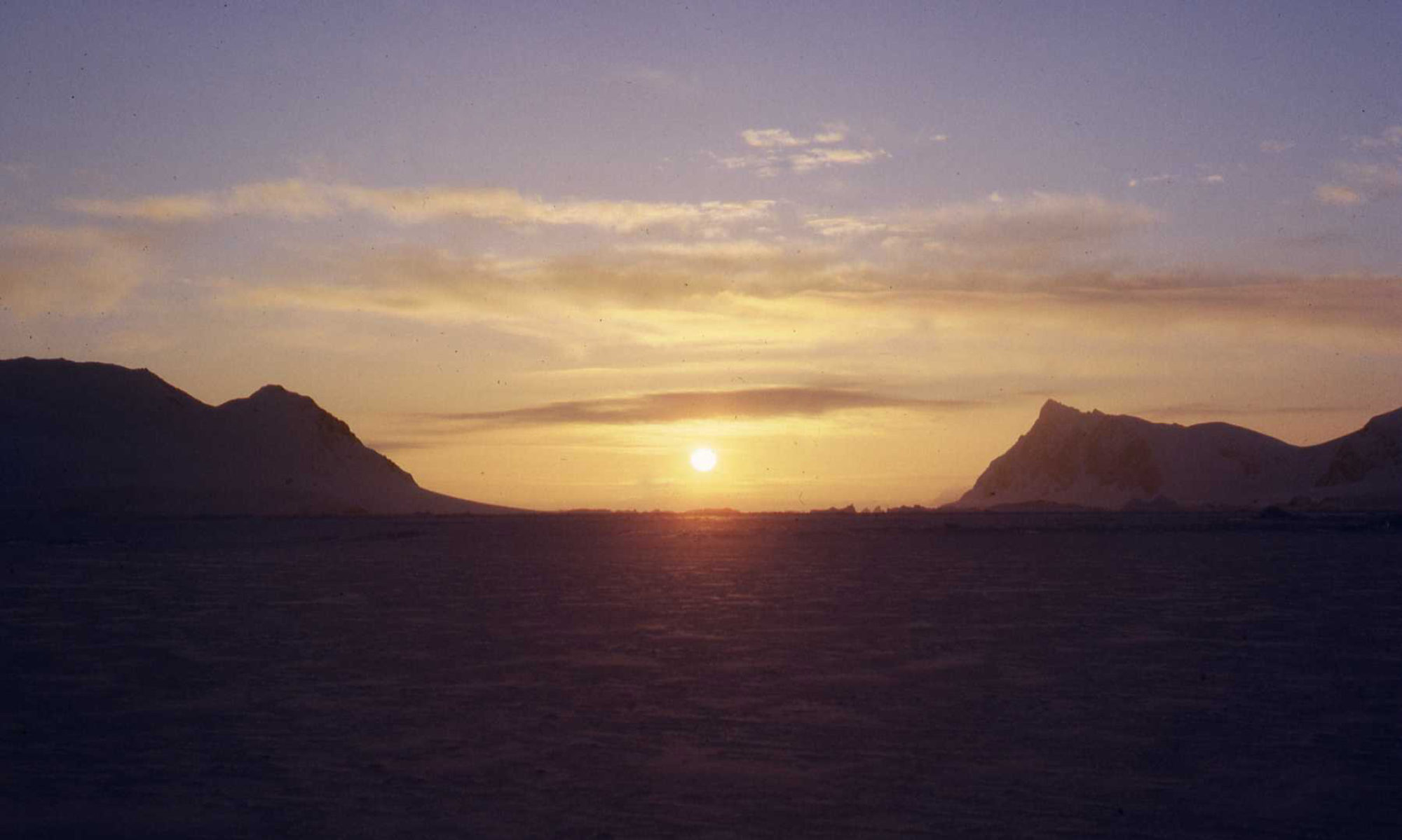Early Days at Base E – Kevin Walton (continued)
The 20 man party under Captain Richard Black had, in one short season, achieved a remarkable
amount. They had built 4 large huts and had landed an enormous amount of food and equipment;
this included a large aircraft, track vehicles and food for several fully trained teams of dogs from
kennels in New England. In addition, the island was covered with caches of aviation fuel and diesel
for the track vehicles and base generators. There were also well dispersed dumps of coal and
supplies in case of fire or another disaster such as swamping by tidal waves generated offshore, as
happened in 1947 at the Argentine Islands.
Though they left no precise records it appeared that with their fully trained dog teams and good air
support they successfully pioneered a route up Northeast Glacier, across the plateau and down to
the East coast via Bill’s Gulch. In addition, a 2 man party consisting of Carl Eklund and Finn Ronne
had completed a remarkable 1000mile journey retracing and extending the southern journey of the
BGLE. They reach the far southern end of King George VI ice shelf and confirmed that Alexander
Island is indeed an island.
From cursory observation it was clear that when “on the trail” the Americans expected to travel in
much greater discomfort than we expected to do, with very lightweight tents that looked home
made and their heavy cumbersome ski boots which, though beautifully hand made, were very
different from the lightweight Inuit sealskin boots that we used.
Compared with ours their base rations appeared to have been very luxurious and their leisure
amenities included a movie projector and many, by our wartime standards, recently released films.
We used their barn-like main hut for about 3 weeks while we built our own. We never learned to
control the “barn-pot” stoves which were fired with bituminous rich coal that smoked abominably.
We were glad to move into our simpler and more homely hut.
When Finn Ronne arrived in 1947, hoping to find his huts as clean as when he had left them 5 years
earlier, he found us fully operational in our own hut which looked so clean and welcoming that he
said it couldn’t possibly have been lived in for the whole of the previous winter – which we took as a
compliment. We had 7 trained teams of huskies while he had lost most of his dogs with “hardpad”
on the journey South and, in addition, he had a collection of some 20 stray dogs collected by the
police from the streets of Santiago!
It was to the great credit of the two American “Bobs” – Nichols and Dodson, that, after this
disastrous start, they managed to put together a working team of 13 dogs for their virtually
unsupported 90-day Geological trip over the sea ice down to George VI Sound.
Kevin Walton – GA Stonington 1946 & 1947
